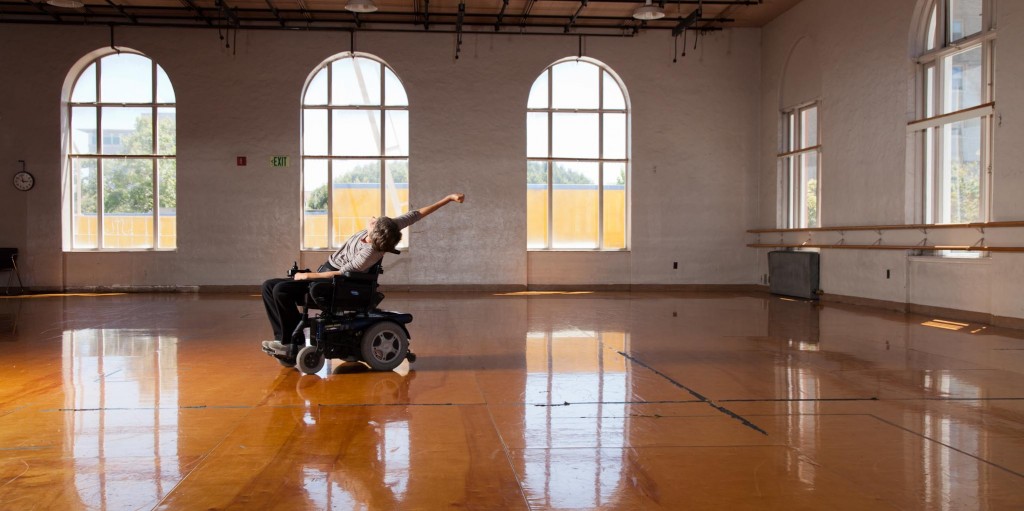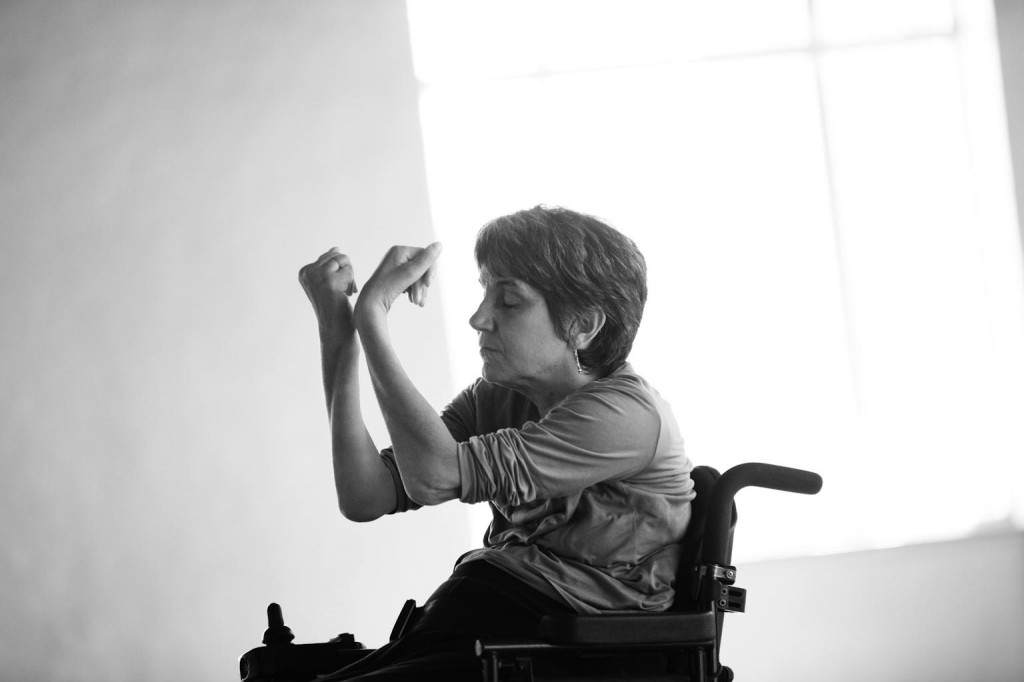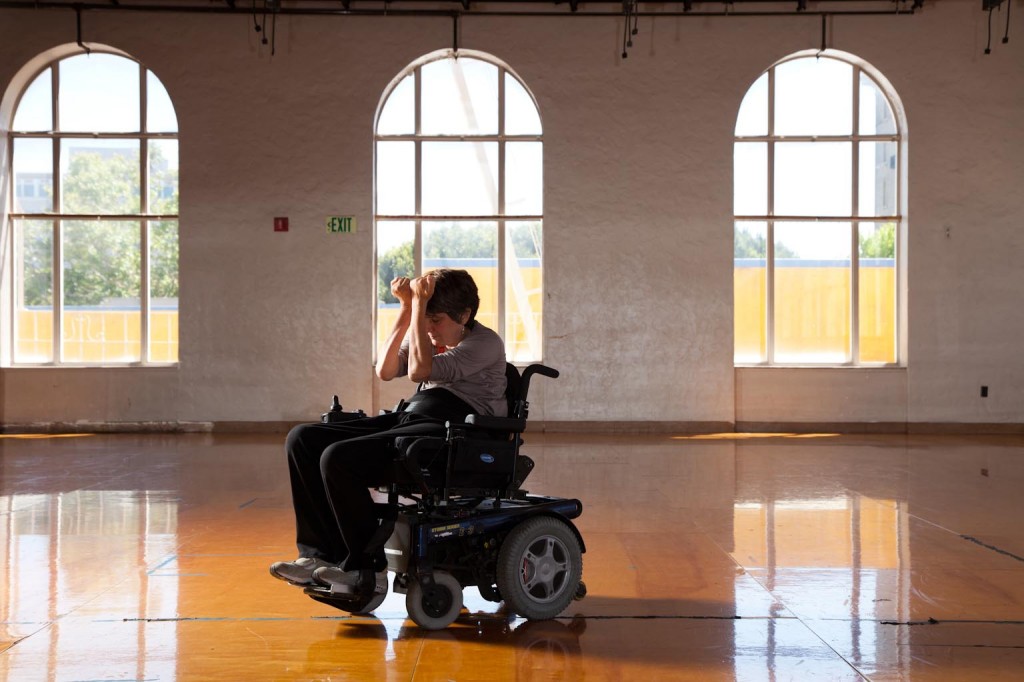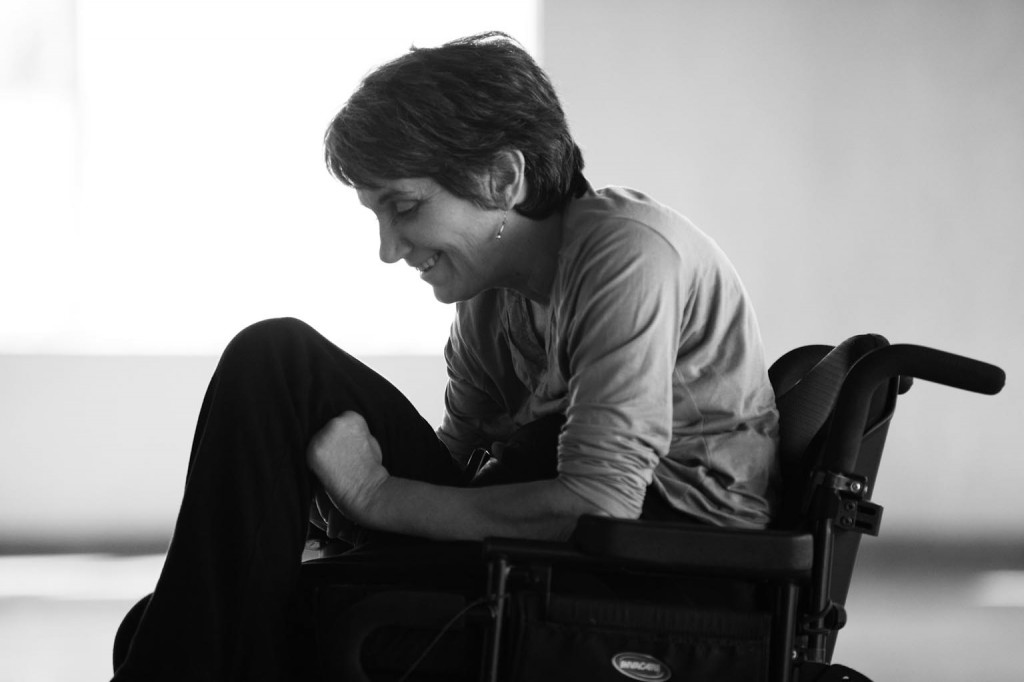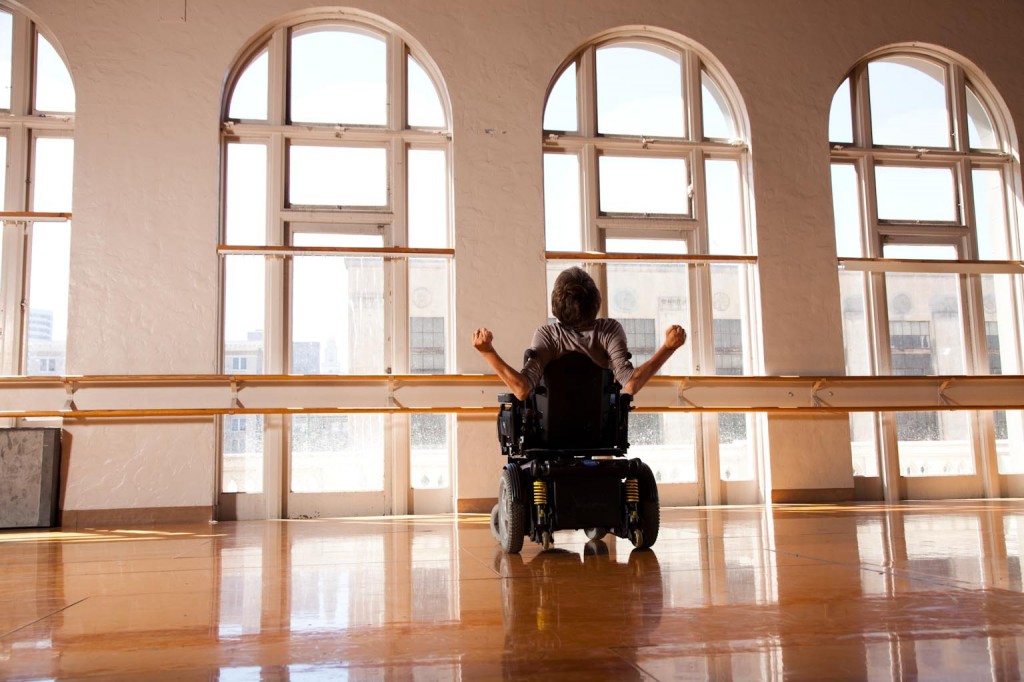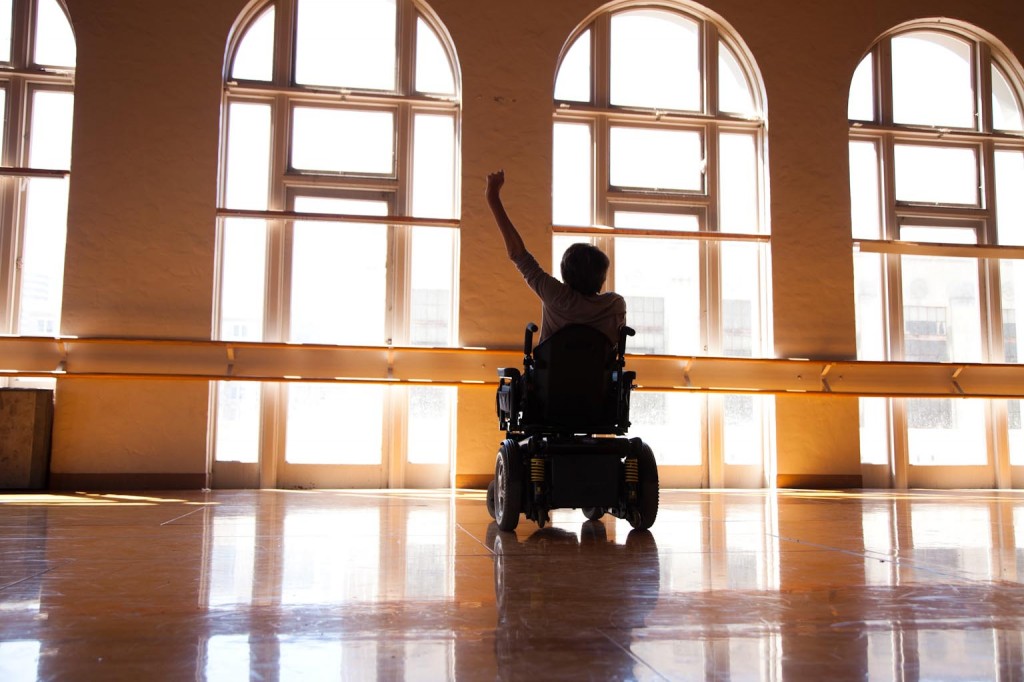Find a Way to make it Happen: An Interview with Bonnie Lewkowicz
BY EMMALY WIEDERHOLT; PHOTOGRAPHS BY GREGORY BARTNING
Bonnie’s chest concaved and then opened. Her head tilted back and her arms circled behind her. Piano music played in the background, accentuated by the soft sound of the wheels from her chair on the polished wood floor. She pulled herself forward and rotated the chair around, extending her arms overhead, at once sure and subtle. The fluidity of her upper body contrasted sharply with her chair, like a box holding water.
This interview is from the book “Beauty is Experience: Dancing 50 and Beyond.” Click here to learn more about the book, or click here to order your own limited edition copy!
~~
When did you start dancing and what have been some highlights along the journey?
It was suggested I take ballet by my childhood doctor because I was born with turned-in feet. I was five and I fell in love with it. I didn’t know my mom was taking me there for my turned-in feet. I studied ballet, tap and jazz for 10 years.
Then I had my accident and broke my neck. I thought I would never dance again, as I had a very narrow view of dance. I’d never seen anyone else in a wheelchair dancing.
I’ve always been a very physical person, so I got into wheelchair sports, though dance was still a big part of who I was. So when I got a call 25 years ago from someone I knew in the community who was part of a project with dancers in wheelchairs, and who asked if I would I like to come check it out, I said sure.
That person was Thais Mazur, the brainchild behind AXIS Dance Company. Thais asked me, “Do you want to be a part of our project? The person who was going to be taking the lead can’t do it for health reasons.” It didn’t take a whole lot of time for me to say yes.
But what I didn’t realize at the time, nor did any of us, was that the dance piece was going to be about me. It was about my life as a dancer prior to having a disability, and then as a dancer with a disability. It was supposed to be about this other person’s life, but it ended up being about mine. And that was the start of AXIS.
From there I danced with AXIS for the next 25 years. I was a founding member, and through it I found my place dancing again.
What does your current dance practice look like?
I’d say I dance about four times a week, with most of that being on my own. And I do handcycling in addition to dancing.
I teach a lot. I stopped learning new choreography about three years ago because I don’t want to tour anymore. I still perform at local venues though, and last year I even performed in Los Angeles a few times. Up until recently, I was also a big part of the kids’ shows AXIS does in the schools. AXIS performs for a lot of school assemblies.
How have the reasons for why you dance changed?
I would say the reasons pre- and post-disability never changed. You often hear that about someone going through a traumatic injury, that they are still the same person. The reason why I danced before my disability was because I loved it. I loved being in my body. I loved expressing myself physically. Music is a big part of what inspires me. None of that has changed.
However, what I thought of as dance changed drastically. I was rigid in my thinking when I didn’t have my disability. I thought I had to have a certain body type and do as the teacher said. There wasn’t a lot of room for creativity and individuality.
I wasn’t aware of modern/interpretive dance or contact improvisation. My aspiration was to dance on Broadway. After becoming disabled, I didn’t think I could dance because I held onto that image. It was actually after taking a contact improvisation class when I began to think maybe dance was possible again, because contact relies on other people. Previously, my dancing was more individual, whereas after that experience I began to work with other people. It actually expanded my possibilities rather than limited them.
What does the idea of success mean to you?
I never had aspirations of going on to join a different company, because that wasn’t going to be possible in all probability. I didn’t see AXIS as a stepping stone to another place. Rather, I saw AXIS’s growth as my own measure of success. Not so much for me personally, but the company as a whole. And it has gone way beyond what any of us could ever have envisioned or even imagined.
I take great pride in saying I’m a dancer, mostly because of the reactions I get: “Oh, so can you get out of your wheelchair?” As far as motivation, dancing was always a big part of it, but education was equally a big part. I don’t have to hammer someone over the head; I can just be it and people get it. I remember some of the first performances with AXIS, people not only with disabilities but other people who were perhaps large or short, or just didn’t have the classic dancer body, would thank us for giving them permission to dance. It’s hard to believe it but so many people still get turned off to dance because of body type.
What do you perceive is your legacy?
That anyone can dance. All dancers can work with their abilities and strengths, and can come to see disability as an opportunity, not as a limitation.
How much longer do you think you’ll keep dancing?
I think I’ll always be dancing in the quiet of my own home to Santana. I’ll always be doing that. I can’t help but do that.
It’s hard to say when I’ll stop performing. I haven’t given myself any timeline. I just don’t get any kind of thrill from it anymore. So it’s become more of a job now than something I do because I love it.
What advice would you give to the next generation of dancers?
Don’t let people say you can or can’t do it. Find a way to make it happen. Don’t box yourself in.
~~
Starting at an early age, Bonnie Lewkowicz studied many forms of dance with dreams of being a professional until an all-terrain vehicle accident left her paralyzed and using a wheelchair. She explored wheelchair sports and earned a BA in recreational therapy. She is one of the founding members of AXIS Dance Company, and has also danced, taught and served as an administrator for the Dance Access/KIDS program.
This interview is from the book “Beauty is Experience: Dancing 50 and Beyond.” Click here to learn more about the book, or click here to order your own limited edition copy!

